
Worldcarblog.com
Incredible sales result of electric cars in Europe
The sales results for the last quarter in the European market were recently published, and fully electric and hybrid cars account for 43 percent of vehicles sold in the European market in the third quarter of 2022.
In the same period last year, electric cars and plug-in hybrids accounted for less than 40 percent of all vehicles sold. Sales of exclusively electric cars jumped by 22 percent compared to the same period last year. However, sales of plug-in hybrids are slightly weaker, by 6 percent to be exact.
National and local lawmakers are increasingly withdrawing subsidies for plug-in hybrids in favor of incentives for electric cars. However, with the EU's decision to ban the sale of cars powered by fossil fuels from 2035, it is inevitable that the number of electric cars sold will increase year on year.
As for conventional cars, petrols saw sales drop by 3.3 percent, but still remain the most popular choice among buyers, accounting for 38 percent of total sales. As for diesels, they now account for only 17 percent of all vehicles sold, and compared to the third quarter of 2021, a sales decline of 4.7 percent was recorded.
In 2015, diesels made up more than half of the market, but with an increasing number of electric and hybrid models, electricity has taken over. The increasing number of sold electric cars is evidenced by the sales results for September, when the electric Tesla Model Y was by far the best-selling car on the European market.
2024 Audi SQ8 e-tron & SQ8 e-tron Sportback
A 496-hp electric powertrain gives the 2024 SQ8 e-tron a kick in the jeans and a believable spot among the brand's hotted-up models. In light of the solace situated Q8 e-tron SUV and accessible in two completely traditional looking body styles — squareback and fastback (called the Sportback) — the SQ8 e-tron team offers a lot of similar extravagance treatment as their tamer cousins however with a sportier look and more go-power. A 106-kWh battery pack ought to convey good driving reach, albeit not so much as opponents, for example, the BMW iX and the Tesla Model X. The SQ8 e-tron can be charged rapidly by means of a DC quick charging station. We figure the 240 miles of reach it will probably convey ought to be enough for the vast majority. Audi's best tech is all remembered for each SQ8 e-tron, including its Virtual Cockpit computerized checks, touchscreen infotainment with Wi-Fi network, and a far reaching set-up of driver-help includes that incorporates versatile journey control and path keeping help.
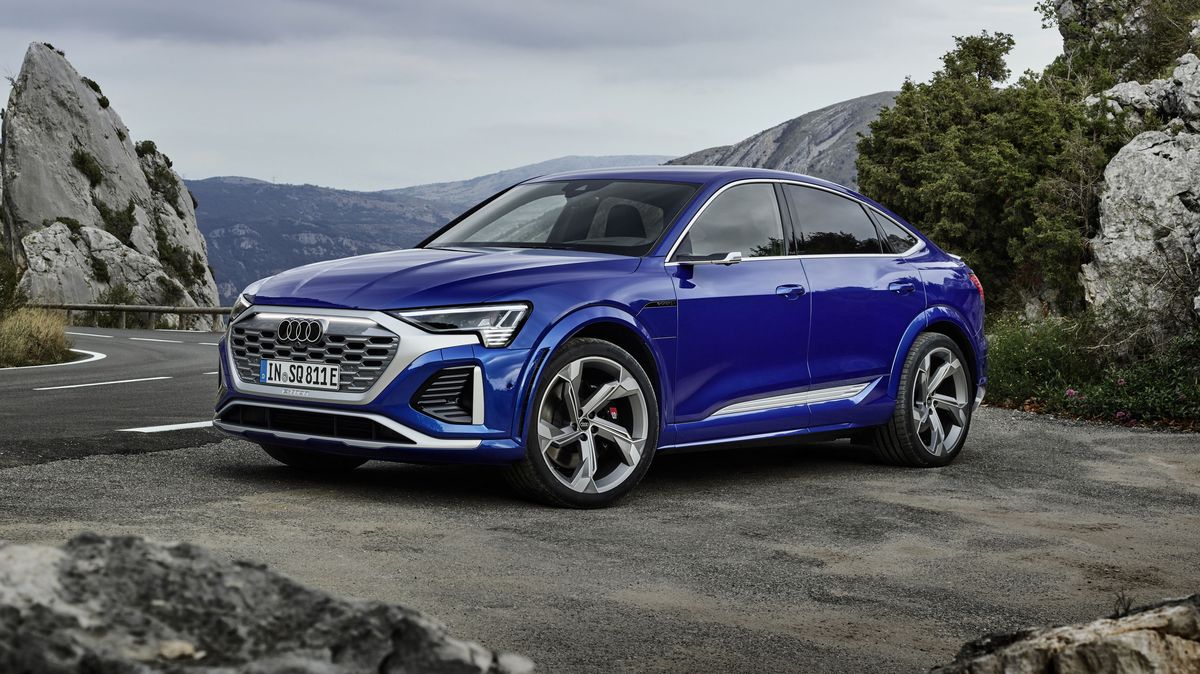
What's happening for 2024?
The SQ8 e-tron is another nameplate for the Audi arrangement for the 2024 model year. It's basically a renamed variant of the 2023 e-tron S SUV, with no significant changes to the squareback and Sportback body styles.
Audi hasn't delivered valuing for the 2024 SQ8 e-tron yet, yet we anticipate that it should follow a similar trim construction as the 2023 e-tron S. While it's feasible to burn through six figures on a SQ8 e-tron, we figure the one to purchase is the passage level Premium In addition to manage. It comes standard with the entirety of the extravagance and comfort includes that you'd expect — including an all encompassing sunroof, real calfskin upholstery, and four-zone programmed environment control — without adding a solitary choice bundle.
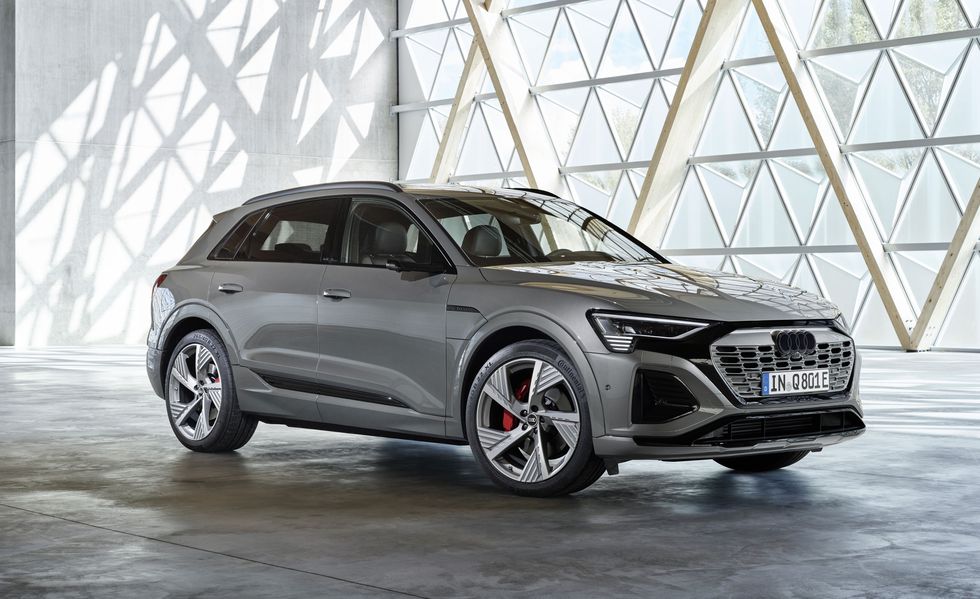
EV Engine, Power, and Execution
While the SQ8 e-tron shares its foundation with the Q8 e-tron, it sports an all the more remarkable three-engine electric powertrain that makes 496 strength. We haven't tried it yet, yet Audi gauges it can show up at 60 mph an entire second sooner than the Q8 e-tron. In view of our trial of an e-tron Sportback, that implies the SQ8 could arrive at 60 mph in approximately four seconds — yet our testing will affirm assuming that is the argument once we run it against the clocks. Since there are two electric engines on the back hub instead of one, the SQ8 e-tron can imitate a force vectoring differential by sending more capacity to the external back tire on a case by case basis to improve cornering We drove a model on a race course back when it was known as the e-tron S and found it simple to execute tire-obliterating, smoke-tastic floats. We don't know how SQ8 purchasers will manage this capacity in reality, yet watch for smoke signals. In typical driving, the SQ8's dealing with is certain and sensibly athletic, however don't expect similar fresh reactions you'll find on other S-marked Audi models.
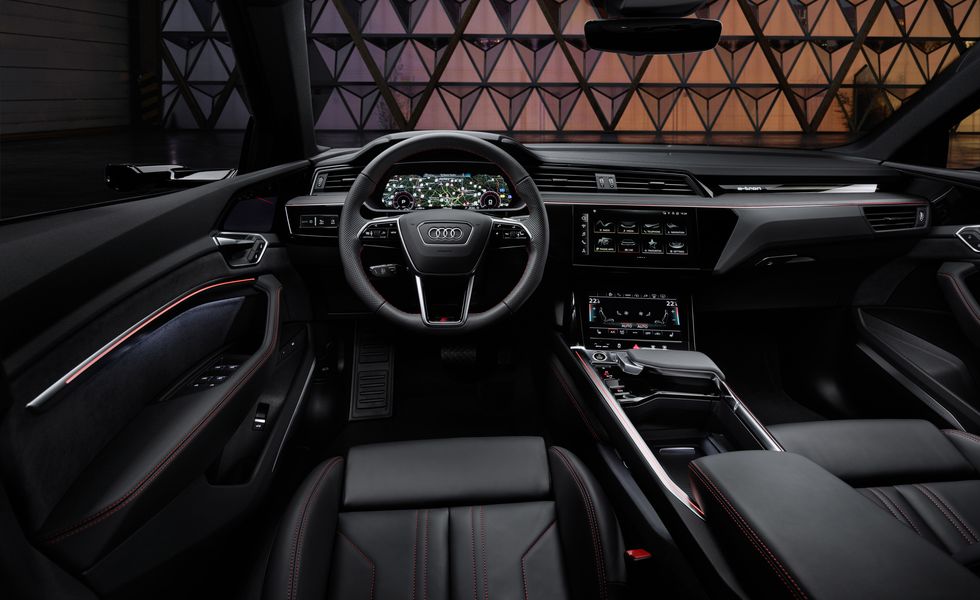
Range, Charging, and Battery Duration
All SQ8 e-tron models accompany a 106.0-kWh battery pack that can be energized using 170 kW DC quick charging association. Audi says this battery ought to give the SQ8 e-tron a scope of 307 miles for every charge, except that is as indicated by the European WLTP test cycle which is famously hopeful. We figure the EPA will provide it with a rating of around 240 miles, yet that is not official yet.
Mileage and True MPGe
The active e-tron S was appraised by the EPA for up to 73 MPGe city and 78 MPGe interstate and we expect the SQ8 e-tron to convey comparable assessments. Whenever we have an opportunity to drive the SQ8 e-tron, we'll refresh this story with test results from our 75-mph roadway mileage test. For more data about the SQ8 e-tron's mileage, visit the EPA's site.
Inside, Solace, and Freight
The SQ8 e-tron's lodge is quieted while cruising and offers a lot of room for grown-ups in the two lines of seats. The initial feeling is that of a generally computerized insight, as the SQ8 e-tron's dashboard is loaded with numerous high-goal screens that incorporate Audi's computerized check group — called Virtual Cockpit — and two flush-mounted touchscreens in the middle. Obviously, there's a plenty of upscale elements too, including cowhide upholstery, an all encompassing sunroof, four-zone programmed environment control, warmed front and back situates, a power-worked back liftgate, and a power-customizable guiding segment — all norm.
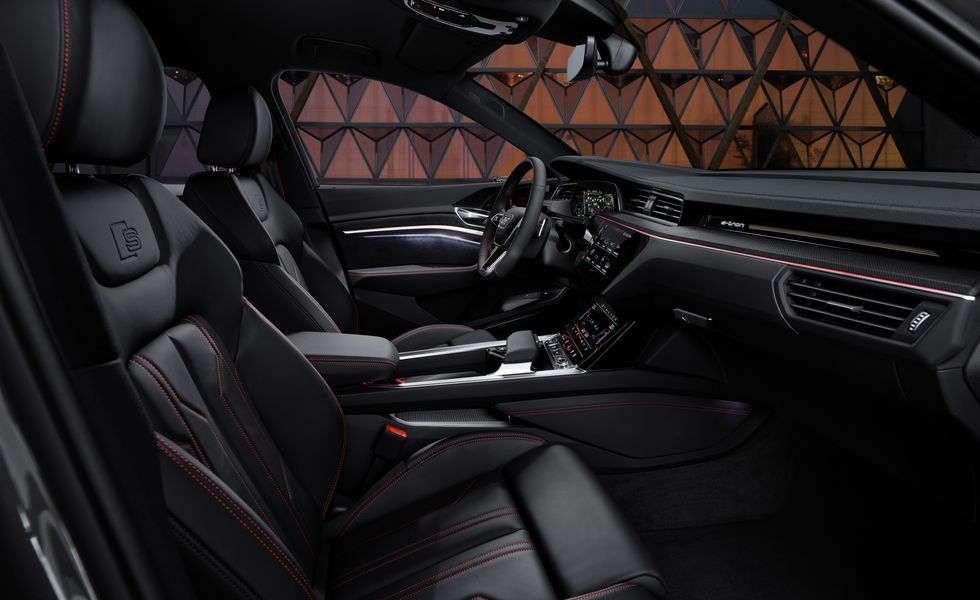
Infotainment and Availability
A huge 10.1-inch touchscreen show is flush-mounted into the SQ8 e-tron's dashboard while a more modest 8.6-inch show interfaces the scramble to the mid control area. The lower show is utilized basically for the SUV's optional controls like the environment settings and the drive modes. Apple CarPlay and Android Auto are both norm, as is in-run route, a remote cell phone charging cushion, a Bang and Olufsen sound system, and an installed Wi-Fi area of interest.
Security and Driver-Help Elements
A set-up of driver-help highlights comes standard on each SQ8 e-tron model and incorporates robotized crisis slowing down, path keeping help, vulnerable side observing and versatile journey control with path focusing. For more data about the SQ8 e-tron's accident test results, visit the Public Thruway Traffic Wellbeing Organization (NHTSA) and Protection Foundation for Parkway Security (IIHS) sites. Key security highlights include:
Standard robotized crisis slowing down with walker location
Standard path takeoff cautioning with path keeping help
Standard versatile journey control with a path focusing highlight
Guarantee and Support Inclusion
The Audi SQ8 e-tron and SQ8 e-tron Sportback offer a similar restricted and powertrain guarantee as the customary Q8 e-tron and more modest Q4 e-tron SUVs.
Restricted guarantee covers four years or 50,000 miles
Powertrain guarantee covers four years or 50,000 miles
Electric parts are covered for a very long time or 100,000 miles
No free planned support
Has the EU gone too fast? Maybe petrol and diesel cars will survive after all
A switch to pure electric mobility would wipe out more than 600,000 jobs.
Recently, the European Union announced that it will ban the sale of all new gasoline (including hybrid) and diesel vehicles from 2035. Another "passing point" was left because this decision will be discussed again in 2026.
Was the European Union too hasty in its decision? The motive is to protect the climate, but is the price that the EU economy will pay too high, especially when it comes to countries with a powerful auto industry, such as Germany, France, Italy...?
In an interview with Politiko, the commissioner for the internal market of the European Commission, Thierry Breton, set off the alarm. Breton warned that a switch to pure electric mobility would wipe out more than 600,000 jobs.
Already in 2030, well before the planned ban, 15 times more lithium, four times more cobalt and graphite and three times more nickel will be needed for electric cars - which is an enormous consumption of raw materials, this Frenchman claims.
On the other hand, Europe has some mines, but it will have to import most of the raw materials. Also, 20 to 25 percent more electricity will be needed, but its production using gas or coal does not make sense from the perspective of the fight against climate change.
Even if electricity is produced in a clean way, electric cars still contribute to pollution – due to increased particulate emissions from tires and brakes, Breton says.
Electric cars are on average much heavier than conventionally powered vehicles. The electric Mercedes-Benz EQA, an SUV based on the GLA, is heavier than the large S-Class.
Breton also pointed out serious shortcomings in the expansion of charging infrastructure. Seven million chargers would be needed for serious electric mobility in Europe, and currently there are a total of 350,000.
Seventy percent of them are located in only three countries, France, Germany and the Netherlands, writes Revijahak. That's why phasing out internal combustion engines is not a good idea right now - because even if it succeeds in Europe, petrol and diesels will still be sold on other continents.
"I recommend that European companies continue the production of SUS engines," Breton said.
As for Europe, the EU's internal market commissioner wants to set out in the next few weeks strict criteria by which progress can be measured.
The transition to e-mobility has such an impact on industry that the EU cannot afford to fail. If the Commission finds that line missed, the release date must be postponed.
What the commissioner did not mention is that China also represents a huge competition with its electric cars, which are technologically equal to European models, and are significantly cheaper.
2023 BMW 7 Series First Drive: A Fascinating Exercise in Contrast
Disparate attributes unite to make the new 7 Series an intriguing flagship luxury sedan.
"But" is a theme in the 2023 BMW 7 Series. Its exterior makes the Chris Bangle-design era seem idyllic, but its interior is elevated to a level that makes all BMW 7 Series before it seem like a 3 Series in comparison. It covers ground with tranquility but does not forsake engagement; indeed, its driver's seat is a great place to be, and its second row is better than ever. Plus, the 2023 BMW 7 Series integrates new combustion powertrains. But its first all-electric powertrain is its real story.
Considering the new 7 Series as a whole, "but" becomes irrelevant. No dispute: it is a deeply impressive, segment-challenging flagship luxury sedan.
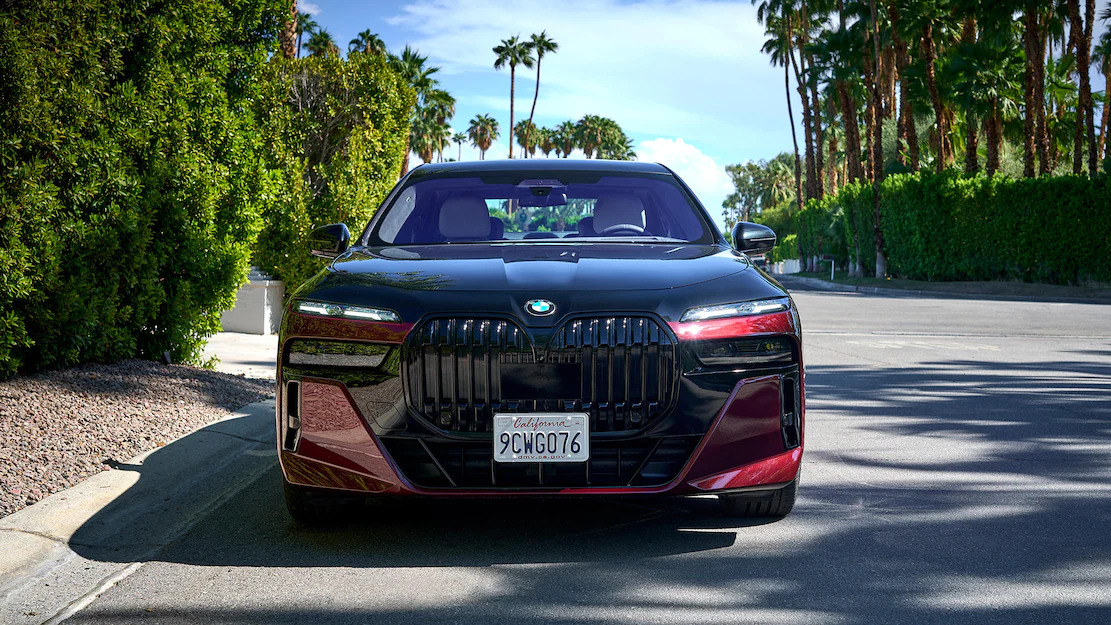
This G70-series model is the seventh generation of the 7 Series, now longer, wider, and taller than before. Though the storied V-12 engine has succumbed to emissions regulations, 48-volt mild hybridization extends the lifespan of the 375-hp, 383-lb-ft 3.0-liter turbocharged I-6 found in the 740i. The same goes for the 536-hp, 553-lb-ft 4.4-liter twin-turbo V-8 underhood in the 760i xDrive. Given that its V-8 is adapted from an M-developed engine, the 760i xDrive accelerates with muscular authority; BMW estimates a 0-60 time of 4.1 seconds. These engines are joined to a new eight-speed ZF automatic transmission, which integrates the crankshaft-mounted starter-generator into the gearbox case. Plug-in hybrid models are on the way, but the all-electric i7 that launched alongside the standard 7 Series most indicates BMW's sustainability focus. Its dual motors match the V-8's power and deliver up to 318 miles of range.
Ever a bastion of controversial design, the 2023 BMW 7 Series continues that legacy. The exterior is a revolution, only vaguely recognizable by its sizable body and key BMW cues; see the large, hard-mounted Hofmeister kink and improbably larger kidney grille, now highlighted by an LED surround. Surely the headlights are the most divisive element—literally. Their split design, where running lights above draw attention away from the primary bulbs below, are a signifier of BMW's highest-end models including the XM and refreshed X7. Despite the car's monolithic appearance, it achieves a fairly low drag coefficient of 0.24 by way of hidden active vents and airflow-directing chamfered edges.
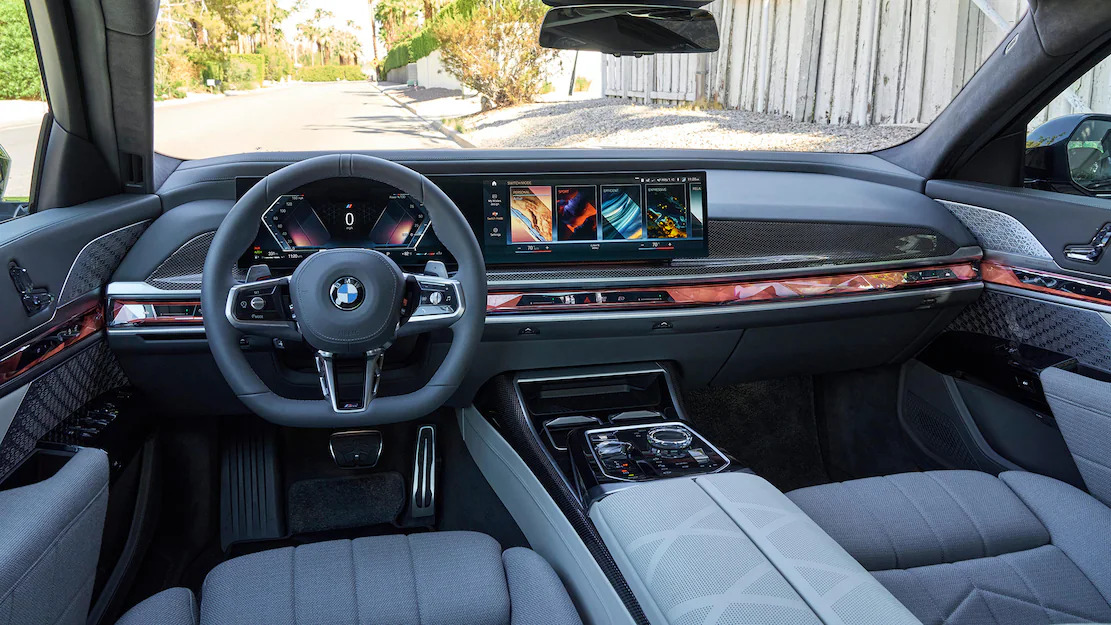
BMW's Ultimate Interior
Moving beyond the body and through the optional power-operated doors lies a cabin of tremendous opulence and artistry. Though its general appearance is a development of traditional BMW layouts, the interiors of prior 7 Series pale in comparison. Its seats are gloriously plush, covered in upholstery finished in a creative geometric pattern extending all the way down to the base. Various cut-glass controls glimmer in sunlight. If leather and wood are too conventional, BMW offers trims like woven cashmere and silver-hued carbon fiber. Textured metallic speaker grates add visual intrigue to a sound system that enhances digital-audio quality to a level akin to a live performance. Nothing seems left untouched: Even the headrests are adorned with trim and integrated so no unsightly metal support struts are visible.
BMW's restraint in not fitting trendy enormous screens allows for better presentation of these beautiful materials, but by no means are the 7 Series' front-row displays small. A 12.3-inch gauge cluster and 14.5-inch touchscreen are paired beneath a pane of curved glass, with a head-up display above. The rear area, however, offers technology that might've once existed only in the concept-car realm. Each rear door has a 5.5-inch touchscreen, allowing passengers to control various climate and comfort settings. The pièce de résistance is an optional 31-inch 8K touchscreen display that folds down from the ceiling, giving passengers endless ways to stay entertained.
Yet the dazzle is compromised by the clumsiness of BMW's latest iDrive 8 user interface. Physical buttons are largely eliminated, replaced by digital equivalents confined within these touchscreens. Simple functions—adjusting the seats, climate control, or drive mode—require distracting glances away from the road to tap haphazardly at small icons. At least the "Hey, BMW" voice command can handle many tasks, and the on-screen graphics are presented in an imaginative way. The new Interaction Bar stretching across the dashboard further enhances overall ambiance: It projects various color changes to signal functions like an incoming call or driver-assist alerts.
To Drive, Or Be Driven?
Given the fact its V-8 is adapted from an M-developed engine, the 2023 BMW 760i xDrive accelerates with muscular authority that's augmented by the transmission's integrated motor, which supplies electric torque to move the car off the line with finesse. Shifts are barely perceptible, but even so this powertrain cannot match that of the i7 in outright smoothness—the subtle vibrations it produces simply do not exist in its electric counterpart. Conversely, the i7's Hans Zimmer-composed driving sounds are amusing but hardly compare to the thrum that permeates the 760i's cabin as the engine nears its redline. Less appreciable sounds are heard, too, if quietly. If BMW had opted to integrate active noise cancellation into the 7 Series, it might've lessened the tires' patter and side mirrors' turbulence.
Supported by air suspension, the 760i permits only enough texture to inform on the road surface beneath and deftly reduces harshness over potholes and ditches. This ride keeps the car placid at speeds well beyond the pale. But it becomes slightly perturbed by successive small impacts, which introduce a side-to-side jiggling sensation. Meanwhile, more so than the i7, the steering's precision, weight, and feel rests right on the cusp of what might be considered comfortable, as available active roll stabilization props-up the body—ideal for a driver-oriented luxury car.
Even with these attributes, the 2023 BMW 7 Series' second row beckons. It's so spacious, cushy, and richly appointed, even a keen driver might willingly abdicate control to a chauffeur—a proposition not typical among 7 Series buyers, according to BMW's research. Several backseat upgrade packages are available, which bring amenities ranging from heating, ventilation, and massage functions all the way up to reclining backrests, extending ottomans, and an enhanced center armrest. Regardless of equipment, with or without the huge theater screen, the LED-illuminated glass roof adds an airy atmosphere. Furthermore, a chauffeur-esque experience can be had in the front seats as BMW's trustworthy hands-free driver-assists take control on the highway.
But …
Congruences are held in balance in the new 7 Series. Dubious exterior beauty, but a sensational interior. Gratifying driving manners, but an equally impressive backseat experience. Deeply capable technology, but frustrating integrations.
Perhaps the ultimate "but" regards which model is best. At approximately $94,500, the I-6-powered 740i serves as a starting point beneath the $115,000 760i xDrive. But then there's the roughly $120,500 i7 xDrive60, which, though the most expensive, might provide a higher level of comfort and certainly feels more like a BMW of the future. Regardless of which model customers choose, the 2023 BMW 7 Series abolishes any doubt it's the marque's highest expression of luxury.
Source: motortrend.com
Known when Tesla starts producing the Cybertruck
The repeatedly delayed start of production has made this vehicle something of a myth among fans of electric vehicles.
Tesla plans to start mass production of the Cybertruck electric truck at the end of 2023, Reuters has learned. The Cybertruck was first unveiled in 2019, and production was originally slated to begin in late 2021.
The repeatedly delayed start of production has made this vehicle something of a myth among fans of electric vehicles, because many raised their hands more than the pickup will ever see serial production, writes RTS.
Despite the fact that the price of the final version of the vehicle is still unknown, nor are its exact features known, hundreds of thousands of potential buyers have already paid $100 to reserve their Cybertruck.
Three years ago, the initial price was supposed to be under $40,000, but Tesla has since raised the prices of all its models. The exact number of reserved vehicles is not known, but if CEO Elon Musk is to be believed, the company "received more orders for the pickup truck than it can fill in the first three years of production."
In line with that claim is the fact that Tesla stopped accepting orders outside the US in May.
A month ago, Tesla announced that it was preparing its factory in Austin, Texas, for the start of the new model. Musk said in a conference call with financial analysts that "early production" of the electric pickup truck is scheduled for mid-2023.
The Chinese are coming: Europe will soon import more cars than it exports
European car manufacturers are now facing extremely tough competition from China.
The fact that jobs in the European auto industry are threatened is widely written. With the electric transition, many components that were used in SUS vehicles will no longer be needed, and this primarily applies to complex gasoline and diesel engines.
Another problem is the giant from the east, namely China, which is investing more and more aggressively in the auto industry and is preparing to conquer world markets. Even European manufacturers are flocking there because production costs are lower and the latest battery technologies are at the source.
According to a study published by PwC, Europe is under increasing pressure, with potentially serious consequences.
Manufacturers are now facing extremely tough competition from China, and consulting firm PwC predicts that Europe will import more cars than it will export as early as 2025.
It is also indicative that, while Chinese manufacturers are selling more and more electric vehicles in Europe, both European and American are increasingly moving their production of electric vehicles to China.
It is also interesting that last year European car manufacturers exported only 35,000 electric vehicles from China to Europe (an example is the Dacia Spring Electric, which is produced in China), and this year it will probably be 66,000.
In three years, almost 800,000 Chinese-made cars could be sold in Europe, of which about 330,000 from the Chinese plants of European car companies.
Citroen C5 Aircross got a new hybrid version with 182 "horses"
Citroen has enriched the range of drive systems for the C5 Aircross and improved the autonomy of the existing plug-in hybrid versions of the C5 X and C5 Aircross models by 15 percent.
For starters, the C5 Aircross gets an all-new plug-in hybrid powertrain option called the 180 e-EAT8. This version comes as a replacement for the PureTech 180 model with a gasoline engine and combines a 1.6-liter gasoline engine with an electric motor.
Together they produce 182 hp (134 kW) and 360 Nm of torque.
The electric motor can independently produce up to 110 hp (81 kW). This means that it is capable of propelling the car to a speed of 135 km/h or, in other words, fast enough to drive on electricity and on the highway without any problems.
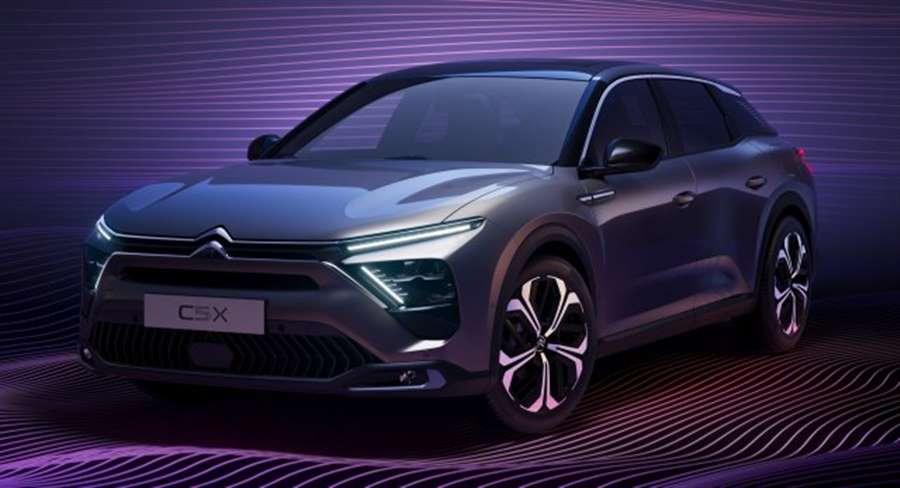
Not too far, though, given that thanks to the 12.4 kWh battery, the C5 Aircross 180 e-EAT8 can travel a maximum of 58 km on electric power alone. It should be kept in mind that with the speeds achieved on the highway, this autonomy is significantly more modest, so this model has its real ecological value when driving around the city.
With a battery that can be charged in just 1 hour 45 minutes on a 7.4kW charger, Citroen suggests that if owners can charge at home and in their office, they can complete an average daily journey by driving on just electricity.
The C5 Aircross 180 e-EAT8 is offered at a starting price of 43,650 euros.
As already mentioned, in addition to the new version, the existing 225 e-EAT8 plug-in hybrid drive has been improved in the meantime, both for the C5 Aircross SUV and the C5 X.
Both vehicles will now have additional autonomy thanks to a new battery generation with a capacity improved from 13.2 kWh to 14.2 kWh, despite having the same number of cells.
The result is a 15 percent increase in driving autonomy for both models. This means that the C5 X 225 e-EAT8 can now travel 63 km in pure electric mode, instead of the previous 55 km, and the C5 Aircross 225 e-EAT8 offers 64 km of all-electric range, compared to the previous 55 km.
Drive power remains unchanged. This powertrain also combines a 1.6-liter gasoline engine with an electric motor, and will still develop 228 hp (168 kW) in both vehicles.

















